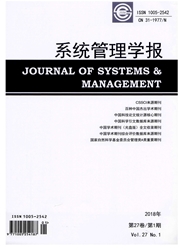

 中文摘要:
中文摘要:
基于一类最终产品的市场需求函数,研究了在厂商1垄断中间产品市场且其为最终产品市场的领导厂商,而同时最终产品市场又存在一追随厂商2的市场状态下的中间产品的定价策略。通过比较厂商1的集团总利润,利用动态博弈的子博弈Nash均衡求解方法,当厂商1可以自由选择定价方式时,得出的结论是无论市场饱和量为多少,差别定价策略都不劣于其他2种方法。在3种定价方法下的均衡策略都存在的条件下,当政府要求必须实行统一定价时,中间产品的最优定价非边际成本,而是高于边际成本,在这种情形下,厂商2最终产品的均衡产量是厂商1均衡产量的1/2。
 英文摘要:
英文摘要:
Based on one kind of market demand function of the final products, the paper studies the pricing strategies of intermediate product when one enterprise 1 monopolizes the intermediate product market and leads the final product market, meanwhile, there is a following enterprise 2 in the final product market. When enterprise 1 can choose pricing strategy freely, by comparing gross profit of enterprise 1 and using the solution of the sub-game perfect Nash equilibrium in a dynamic game model, we obtain the conclusion that the strategy that applies price discrimination isn't worse than the other two methods however much the market saturation is. When the equilibrium strategies are in existence under three different pricing methods and the government requests to apply the same price, the best price of the intermediate product doesn't equal to marginal cost, but is a litter higher than it, and under the condition, the enterprise 2's equilibrium quantity of the final product of is one half of that of enterprise 1.
 同期刊论文项目
同期刊论文项目
 同项目期刊论文
同项目期刊论文
 期刊信息
期刊信息
